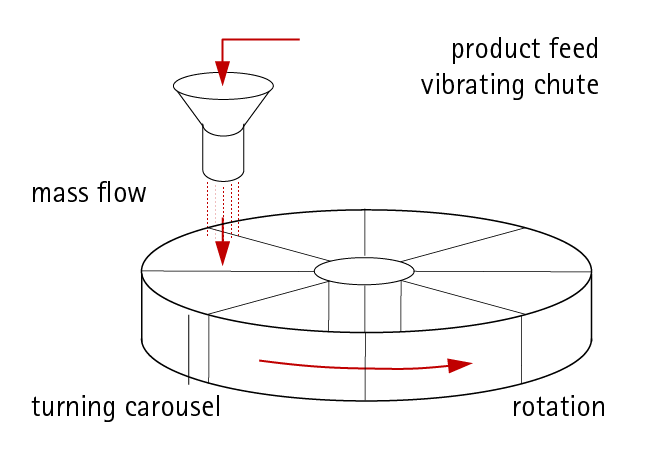As most of the sizing methods are limited to small sample sizes, an important prerequisite to accurate particle size analysis is proper powder sampling and sample splitting [coming ISO 14488: Particulate materials - sampling and sample splitting for the determination of particulate properties]. According to their tendency to segregate, powders may be classified as non-segregating (cohesive) or segregating (free-flowing). Representative samples can be more easily taken from cohesive powders provided that they have been properly mixed before. Thus, sampling for wet measurements is done by preparing a sticky paste. After mixing, it should provide a honey-like consistency. Finally, small material portions are taken with a spatula.
Free flowing powders should be sampled when in motion. In this context, it is advisable to take frequent sub-samples considering the complete powder stream instead of observing a partial flow continuously, e.g. via bypass. This is especially important for in-line and on-line sampling. The estimated maximum sampling error on a 60:40 blend of free-flowing sand using different sampling techniques are given in the table about reliability of selected sampling method.

The spinning riffler generates the most representative samples. In this device a ring of containers rotates under the powder feed. If the powder flows a long time with respect to the period of rotation each container will be made up of many small fractions from all parts of the bulk.
Many different configurations are commercially available. Devices with small numbers of containers (e.g. 8) can be cascaded n times to get higher splitting ratios >1:8n. This usually creates smaller sampling errors than using splitters with more containers. For reference materials sampling errors less than 0.1% are achievable [S. Röthele, W. Witt: Standards in Laser Diffraction; PARTEC, 5th European Symposium Particle Characterization, Nürnberg, 1992, pp. 625-642].











